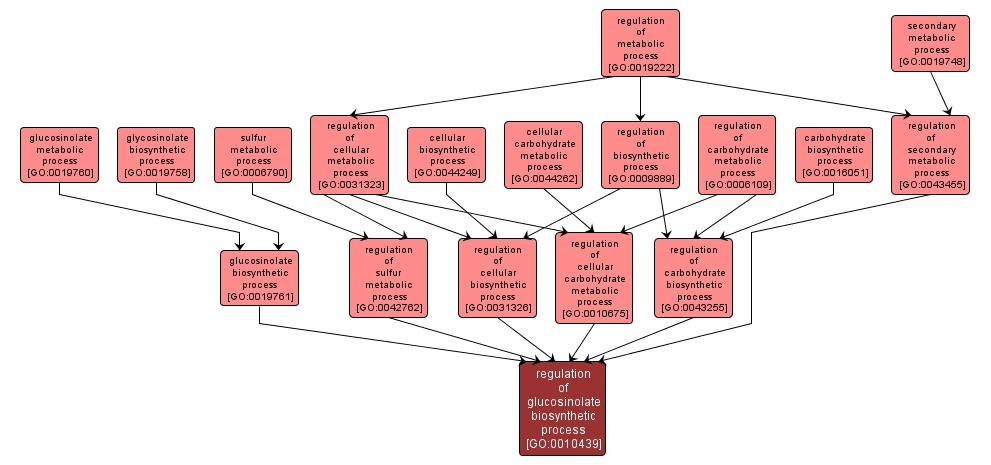GO TERM SUMMARY
|
| Name: |
regulation of glucosinolate biosynthetic process |
| Acc: |
GO:0010439 |
| Aspect: |
Biological Process |
| Desc: |
Any process that modulates the frequency, rate or extent of the chemical reactions and pathways resulting in the formation of glucosinolates, substituted thioglucosides found in rapeseed products and related cruciferae. |
|

|
INTERACTIVE GO GRAPH
|














